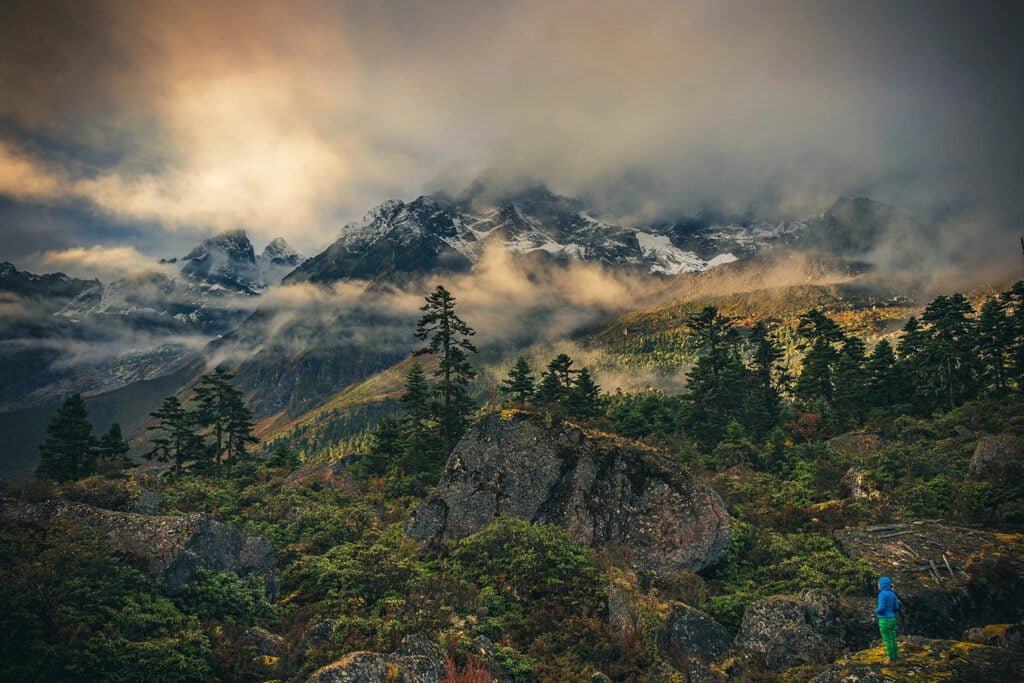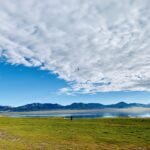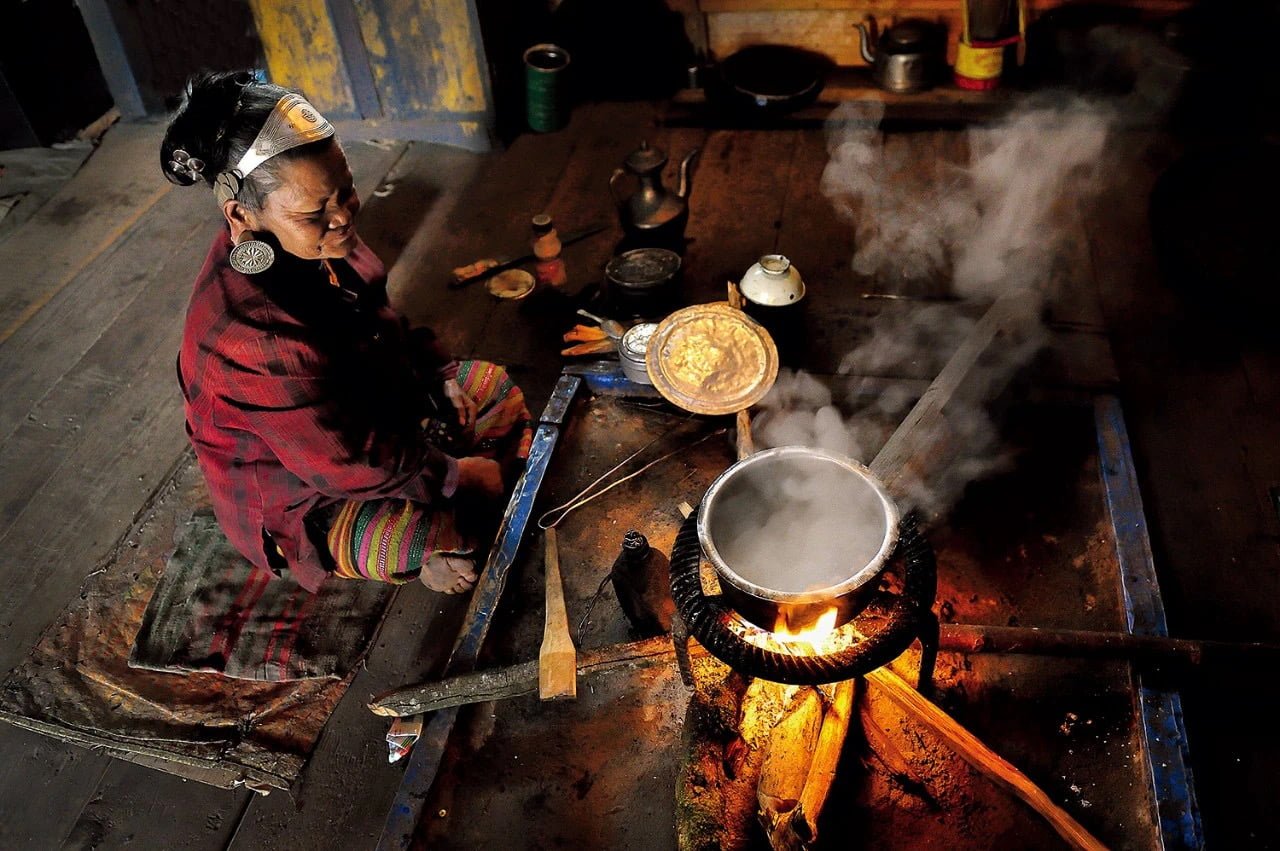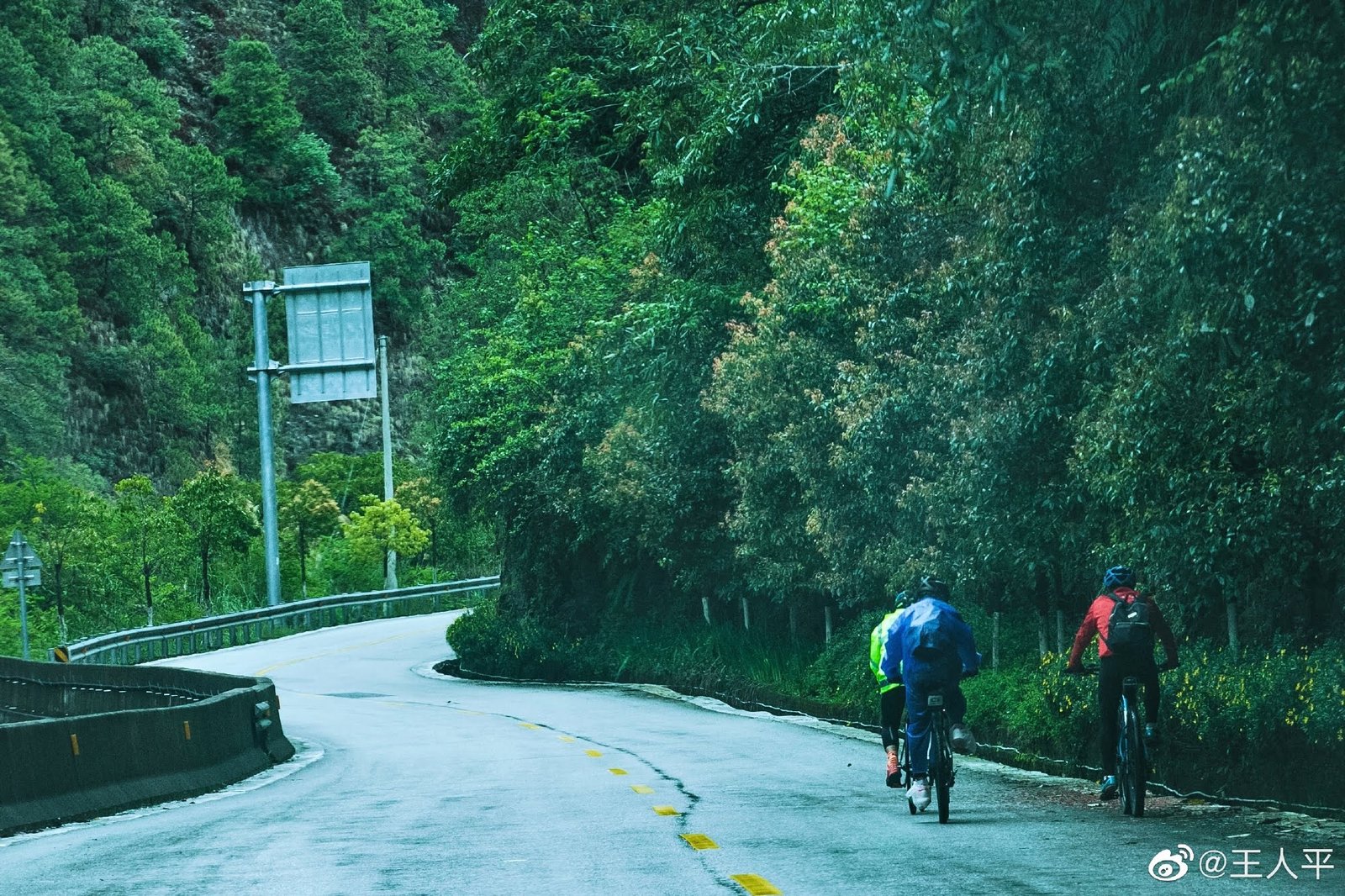Zayü, a county nestled in the southeastern corner of Tibet, offers a unique blend of natural beauty, rich cultural heritage, and intriguing history. Known in Tibetan as (རྫ་ཡུལ་རྫོང་།), which translates to “the land of the Zayü people,” this area is a fascinating destination for adventurers and culture enthusiasts alike.
Location and Geography
Zayü County, (察隅县) with its postal code of 855100 and area code of 0894, lies in the Beri Mountains’ domain in southeastern Tibet. It stretches from 27.7°N to 29.6°N latitude and 95.7°E to 98.7°E longitude. The county shares its borders with Gongbo’gyamda County to the west, Baxoi County in Tibet, and Deqin in Yunnan to the east. To the north, it connects with Bomi County and Baqên County in Chamdo, while its southern borders touch Myanmar and India, extending over 588.64 kilometers.
The name “Zayü” signifies the residence of the Zayü tribe, reflecting its deep-rooted ethnic diversity. Throughout history, Zayü has evolved from being a part of the ancient Tubo empire to its current status. Officially becoming Zayü County in May 1966, it covers an area of 31,659 square kilometers and consists of 3 towns and 3 townships.
As of November 1, 2020, Zayü’s population stands at 28,237, comprising a mosaic of ethnic groups, including Tibetans, Han, Hui, Miao, Nu, Naxi, Derung, Lhoba, Monba, and Teng. The county capital is located in Zhowagen Town (འགྲོ་བ་དགོན་གྲོང་རྡལ།), which is 397 kilometers from Banda Airport, 537 kilometers from Nyingchi, and 960 kilometers from Lhasa. Zayü emerged from poverty in February 2019, and by November 2020, it earned recognition as one of “China’s Most Beautiful Counties.” The China Meteorological Administration awarded Zayü the title of “China’s Natural Oxygen Bar” in February 2024.

Administrative divisions
Zayul County has administration over three towns and three townships:
| Name | Chinese | Hanyu Pinyin | Tibetan | |
|---|---|---|---|---|
| Towns | ||||
| Zhowagoin Town | 竹瓦根镇 | Zhúwǎgēn zhèn | འགྲོ་བ་དགོན་གྲོང་རྡལ། | |
| Zayürongdoi Town | 上察隅镇 | Shàng Cháyú zhèn | རྫ་ཡུལ་རོང་སྟོད་གྲོང་རྡལ། | |
| Zayürongmai Town | 下察隅镇 | Xià Cháyú zhèn | རྫ་ཡུལ་རོང་སྨད་གྲོང་རྡལ། | |
| Townships | ||||
| Tsawarong Township | 察瓦龙乡 | Cháwǎlóng xiāng | ཚ་བ་རོང་ཤང་། | |
| Golag Township | 古拉乡 | Gǔlā xiāng | མགོ་ལག་ཤང་། | |
| Goyul Township | 古玉乡 | Gǔyù xiāng | མགོ་ཡུལ་ཤང་། | |
Terrain and Climate
The dramatic terrain of Zayü County features altitudes that range from low valleys at 1,400 meters to towering peaks over 5,000 meters, including the majestic Meili Snow Mountain at 6,740 meters. The average elevation of the region is about 2,800 meters.
The climate in Zayü falls under the subtropical humid climate zone of the Himalayan foothills. It enjoys mild weather year-round, abundant rainfall, plenty of sunshine, and a long frost-free period. With an annual sunshine duration of 1615.6 hours, rainfall averaging 793.9 mm, and over 200 frost-free days per year, the average temperature is a comfortable 11.8°C. However, Zayü is also prone to natural disasters such as earthquakes, floods, landslides, droughts, and pestilences, making it a land of stark contrasts and resilience.
Zayü’s stunning landscapes, diverse cultural tapestry, and rich historical background make it an undiscovered treasure within Tibet. Whether you’re drawn to explore its remote beauty, delve into its varied ethnic cultures, or simply breathe in the “natural oxygen,” Zayü promises an unforgettable adventure.
Zayü County: A Treasure Trove of Unique Tibetan Products
Zayü County, emerging from its status as a poverty-stricken area in February 2019, thrives on agriculture while also engaging in forestry. Thanks to its warm and humid climate, Zayü is often referred to as the “Little Jiangnan of Tibet,” blessed with evergreen scenery throughout the year. This region is not only rich in diverse crops and livestock but also boasts a wealth of unique products, wildlife, and medicinal herbs, making it a fascinating destination for those interested in Tibetan culture and natural products.
Zayü’s Specialty Products
Agricultural Bounty
Zayü’s fertile lands yield an impressive variety of crops including highland barley, wheat, rice, corn, rapeseed, and peanuts. The region is also home to yaks, buffalo, sheep, and goats, contributing to its diverse agricultural output. With a forest stock volume of 115 million cubic meters and abundant mineral resources such as silver, lead, iron, copper, zinc, antimony, and mica, Zayü’s natural wealth is remarkable.
Among its notable specialty products are mandarin oranges, tangerines, sugarcane, Tibetan wooden bowls, wooden boxes, bamboo woven boxes, and wooden saddles. Additionally, Zayü is home to rare wildlife like red pandas, macaques, otters, brown bears, and Sumatran serows, as well as precious medicinal materials including deer antler, musk, gastrodia elata, fritillaria, notoginseng, picrorhiza, eight-angled lotus, and Hericium erinaceus.
Specialty of Zayul county in Nyingchi
Red Panda
Known as the “Firefox” or “Lesser Panda,” the red panda is larger than a domestic cat, with a body length of 50-60 cm and a thick tail of 40-50 cm. It has a round head, short limbs, deep red fur on the upper part, and dark brown below. The red panda lives in high-altitude forests and bamboo thickets, feeding on roots, bamboo shoots, leaves, fruits, and occasionally small birds and eggs. This adorable and rare species is a living fossil from the Tertiary period.
Otter
Referred to as the “water cat” in Tibetan, the otter is a slender, aquatic mammal belonging to the Mustelidae family. It measures 60-75 cm in length and weighs between 2-5 kg. Otters have flat tails, small ears, short legs with webbed feet, and dense, glossy dark brown fur. They are primarily nocturnal, excellent swimmers, and feed on fish, frogs, crabs, and waterfowl. Otter fur is highly valued for making coats and hats, and when domesticated from a young age, they can assist in fishing. In traditional Tibetan medicine, otter liver is used for its high protein and glucose content, benefiting various health conditions.
Sumatran Serow
Also known as the “mountain goat,” the Sumatran serow is a bovine mammal. It has a body length of 1.4-1.7 meters, a shoulder height of about 1.1 meters, and coarse fur that is dark with a hint of brown. Known for its agility in leaping and climbing steep cliffs, the serow feeds on mushrooms, tender leaves, and grass. Its antlers, which are cold in nature, are used in traditional medicine to treat conditions like convulsions, headaches, and fever.
Zayü County’s rich and varied landscape supports a vast array of unique agricultural products, wildlife, and medicinal herbs, reflecting the region’s natural abundance and cultural heritage. These specialties not only offer a glimpse into the local lifestyle and traditions but also highlight the potential for sustainable development and preservation of biodiversity in this remote Tibetan region.
Travel and Transportation in Zayü: Gateway to the Shangri-La Ecotourism Circle
Zayü, located at a crucial junction of the new Yunnan-Tibet passage, finds itself on the grand Shangri-La Ecotourism Circle, making it an essential stop on the new Sichuan-Yunnan-Tibet transportation loop. The area is connected to the Sichuan-Tibet Highway by a dedicated road, enhancing its accessibility and appeal as a travel destination.
Navigating to and from Zayü
Road Connections
The Dongga Highway extends from Jigong in the west through Bayi Town directly to Lhasa, with northward connections to Chamdo and Chengdu, and further links to Kunming via the Yunnan-Tibet Highway.
On September 2, 2020, Zayü County saw the inauguration of two passenger transport routes to Lower Zayü Town and Upper Zayü Town, filling the gap in passenger bus services to Upper Zayü.
Travel Tips
- Getting There: The journey from Bayi Town in Nyingchi to Zayü covers 537 kilometers, predominantly on well-maintained asphalt roads. Buses are available from Bayi Town for the trip. However, travelers should be cautious of mudslides and landslides during the rainy season, which can disrupt travel plans despite the route’s scenic beauty.
- Local Amenities: Zayü’s county town boasts a bustling atmosphere with a variety of shops and eateries, including barbecue spots for quick cravings. Don’t miss the chance to try the Teng people’s hand-grabbed rice, known for its unique flavor.
- Border Permits: As Zayü is a border county, visitors planning to explore the area must obtain a border permit from the public security departments.
Popular Zayü Attractions
Nyingchi Zayü Nature Reserve
Zayü is not just a hub for travelers; it’s also home to pristine natural landscapes and biodiversity. The Zayü Nature Reserve stands out as a must-visit destination, offering a sanctuary for wildlife and a haven for nature enthusiasts. Its unspoiled environment provides a perfect backdrop for hiking, wildlife photography, and immersing oneself in the tranquility of nature.
Zayü’s strategic location on the new transportation loop and its rich natural and cultural offerings make it an increasingly popular destination for those seeking the beauty and serenity of the Tibetan landscape. Whether you’re a seasoned traveler or a curious explorer, Zayü offers a journey into the heart of Tibet’s Shangri-La, with its convenient transportation options, local delicacies, and breathtaking natural attractions.




















